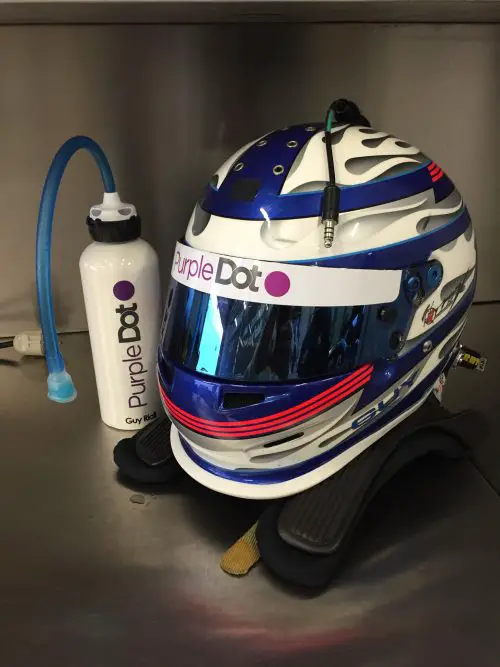Last Updated on October 16, 2023 by Pittalks
As an observer, it’s easy to underestimate the physical demands placed on professional race car drivers. Beneath the high-tech helmets and fire-resistant suits, drivers contend with extreme temperatures that can soar above 100 degrees Fahrenheit. This article explores the various techniques and technologies NASCAR drivers use to combat these conditions and remain cool under the literal and figurative heat of competition.
How Do Nascar Drivers Beat The Heat?
While the excitement of the race and the roar of the crowd might be the first things that come to mind when picturing a NASCAR event, the reality for drivers is often a lot more grueling. Encased in their vehicles, they face searing temperatures for hours on end. However, they employ a variety of strategies to keep their body temperatures in check.
Ventilated Suits
One of the primary tools in a NASCAR driver’s cooling arsenal is their suit. These specially designed pieces of apparel are made from fire-retardant materials to protect the wearer in the event of a fire. While safety is the prime concern, manufacturers such as Sparco also work to make these suits as comfortable and breathable as possible.
How Do Ventilated Suits Work?
Ventilated suits function by promoting the evaporation of sweat, which in turn cools the body. They are designed to be lightweight and breathable, allowing moisture to evaporate rather than clinging to the driver’s skin. However, while the suit aids in cooling, drivers also utilize other technologies and techniques to stay cool.
Window Blockers
In addition to their suits, drivers employ a method known as window blocking to reduce the amount of sunlight entering the vehicle and thereby reduce the heat. This involves using a special material like snap shades to cover the windows, blocking some of the sun’s rays while still allowing the driver to see out.
Adequately Hydrating
Hydration plays a crucial role in helping drivers manage high temperatures. Drivers consume fluids rich in electrolytes during the race to replace what they lose through sweating. These fluids often contain calories as well, providing drivers with the energy they need to maintain focus and reaction times as the race progresses.
Read more: When and Why Did NASCAR Start Racing on Mother’s Day?

Do Nascar Cars Have Air Conditioning?
Contrary to what one might assume, NASCAR vehicles are not equipped with traditional air conditioning systems. The reason behind this is twofold: first, an air conditioning system would add significant weight to the car, potentially impacting its performance on the track. Second, the energy required to run an air conditioning system would place an additional load on the engine, again potentially affecting performance.
Instead of air conditioning, NASCAR vehicles utilize a complex ventilation system designed to keep air flowing around the driver. This system involves using fans and ductwork to draw cooler air from outside the vehicle and direct it towards the driver.
Read next: Are NASCAR Cars Manual?
Have the Nascar Cooling Methods Changed Over The Years?
Over the years, NASCAR cooling methods have evolved substantially. As technology has advanced, new solutions have been developed to help drivers stay cool and perform at their best. Today’s drivers have access to a range of cooling equipment, from advanced ventilation systems to specially designed cooling suits.
Keep reading: How Many Cars Race in NASCAR?
Radiation, Convection, and Conduction Cooling Methods for Nascar Drivers
NASCAR drivers utilize cooling methods based on the principles of radiation, convection, and conduction. Radiation involves the emission of heat, convection entails the movement of heat through a fluid (in this case, air), and conduction involves the transfer of heat through direct contact.
Within a NASCAR vehicle, radiation cooling is achieved through the use of reflective materials that reduce the amount of heat absorbed from the sun. Convection cooling is facilitated by the car’s ventilation system, which moves cool air from outside the vehicle to the driver. Conduction cooling can be achieved through the use of cooled seat cushions or other devices that come into direct contact with the driver.
Related article: NASCAR vs Indycar – What’s the Difference?
NASCAR vs F1
Here’s an example of the radiation, convection, and conduction concepts at play:

How Hot Does It Get in Nascar Cars?
The temperature inside a NASCAR vehicle can reach alarming highs. On a hot day, the interior of a race car can heat up to between 120 to 160 degrees Fahrenheit. This extreme heat is generated not only by the ambient temperature outside the car but also by the heat produced by the car’s engine and brake system.
You’ll like this: How Do NASCAR Drivers Pee?
Are There Pit Lane Cooling Techniques at Play?
In addition to the cooling methods employed within the vehicle itself, drivers can also take advantage of cooling techniques during pit stops. This may include the use of cool towels or cooled suits, as well as the opportunity to hydrate and take in a quick burst of air conditioning from a portable unit.
In conclusion, staying cool in a NASCAR race is a multifaceted challenge that requires a combination of technology, strategy, and physical conditioning. By leveraging these methods, drivers are able to compete at high speeds in grueling heat, pushing their skills to the limit while ensuring their safety and comfort.
Related article: Everything You Need To Know About NASCAR Pit Stops

